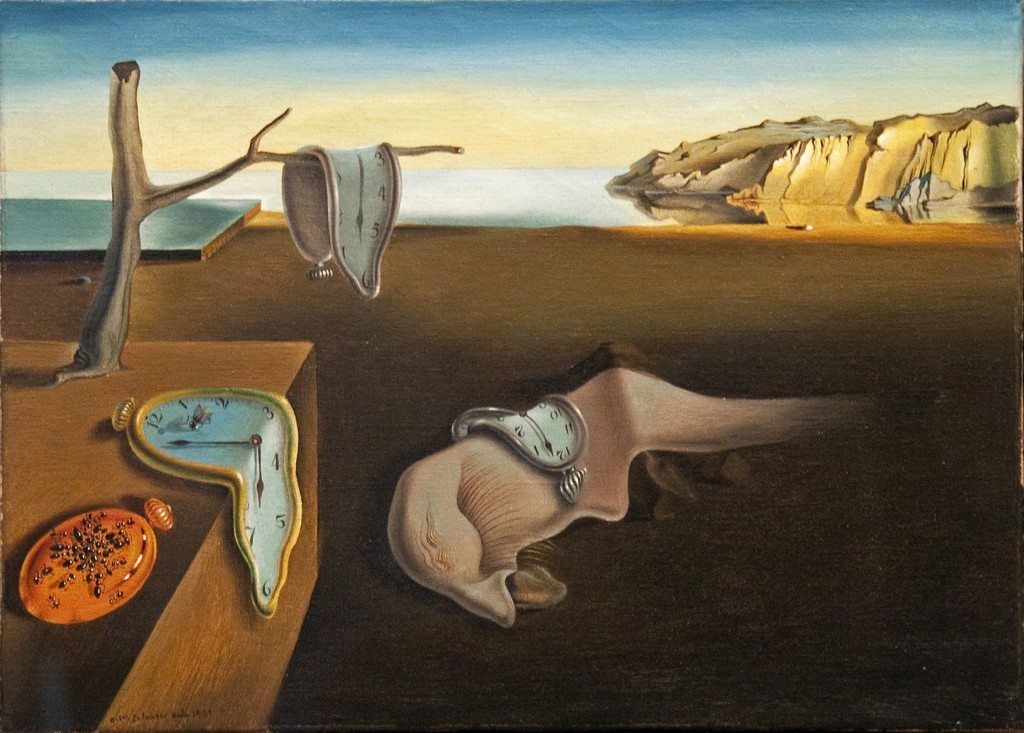Sleep Your Way to Creativity And 9 More Surefire Methods For More Ideas

We’ve written about creativity a few times on the Buffer blog, but it’s hard to keep track of everything we learn about it. One day I’m adjusting the temperature in my workspace, and the next I’m trying to put off creative work until I’m tired.
If you’re in the same boat, and you find it’s difficult to remember what will improve your creativity and when you should do your most creative work, hopefully this list will help you get it all straight.
1. Your brain does better creative work when you’re tired
Unlike solving an analytic problem, creative insights come from letting our minds wander along tangents and into seemingly unrelated areas. Though many of us identify as morning larks or night owls, peaking in our problem-solving skills and focus at particular times of the day, creative thinking actually works better at non-optimal times. So, if you’re a morning lark, your brain will be better at finding creative insights at night, when you’re tired.
The reason behind this is that a tired brain struggles to filter out distractions and focus on one thing. It’s also more likely to wander off on tangents. While that seems like a bad thing when you’re working, creative thinking actually benefits from distractions and random thoughts. Research has shown that we’re better at “thinking outside the box” at our non-optimal times.
2. Exercise can improve your creativity
We know exercise is good for us for lots of reasons, but here’s one more. Studies have shown that exercise can improve our ability to think creatively. When researchers had half the participants in a study perform an exercise video while the other half simply watched a video, those who had exercised outperformed the others in terms of divergent thinking – or, coming up with more possible solutions to a problem.

I love the way it’s explained in this Pyschology Today article:
“Sweat is like WD-40 for your mind-–it lubricates the rusty hinges of your brain and makes your thinking more fluid. Exercise allows your conscious mind to access fresh ideas that are buried in the subconscious.”
3. Ambient noise levels are best for creativity
I actually thought silence might turn out to be the best sound for creative thinking, but it turns out that ambient noise levels are just right. Unlike loud music or silence, ambient noise levels have proven to be perfect for improving creative thinking.
Silence, in fact, actually helps us to sharpen our focus, so it’s useful for intense problem-solving or detail-oriented tasks. Creative thinking, on the other hand, requires the kind of ambient buzz of sound that you might find in a café to promote broader thinking and new ideas.
So much so that tools like Coffitivity exist to bring that ambient café sound to your desk:

4. Nothing is original: creativity is all about making connections

I always thought creativity was about coming up with original ideas, but it turns out creativity is really just about making new connections between existing ideas. This is pretty exciting, because it means creativity suddenly seems less scary: we can all connect things that already exist, right?
Even Steve Jobs agrees with this theory of what creativity is all about:
“Creativity is just connecting things. When you ask creative people how they did something, they feel a little guilty because they didn’t really do it, they just saw something.”
Another quote I love about this is by the artist, Austin Kleon:
“Every artist gets asked the question, ‘Where do you get your ideas?’
The honest artist answers, ‘I steal them.’ “
Research has even found that intelligence is something that comes from physical connections in the brain:
“Several brain regions, and the connections between them, were what was most important to general intelligence.”

“The brain regions important for general intelligence are found in several specific places (orange regions shown on the brain on the left). Looking inside the brain reveals the connections between these regions, which are particularly important to general intelligence. In the image on the right, the brain has been made partly transparent. The big orange regions in the right image are connections (like cables) that connect the specific brain regions in the image on the left.”
5. Travelling abroad might improve your creative thinking

The research on this one is still small, but one study showed that for college students, those who travelled abroad scored higher on creative thinking tests than those who stayed at their main campus. This particular study followed students who travelled from their college in the US to take part in a summer study program in England.
In many countries, cultural norms differ greatly between different states or areas, so it follows that we might see an increase in creativity from even interstate travel.
6. Dim lighting makes us feel more free
I like a lot of natural light in my workspace, and I get quite frustrated in dark rooms when I need to focus. However, I was surprised to find this research that proved dim lighting can improve creative performance.
The researchers completed six different studies, which all showed that dim lighting increased creativity. They found that even without noticing a difference in visibility, if the lighting around them was dim, participants were likely to be more creative. The reasoning came from the subconscious feeling of being more free to explore:
“…darkness elicits a feeling of being free from constraints and triggers a risky, explorative processing style.”
For times when you don’t have control over the lighting around you, you can just think about being in the dark and it could have an effect:
“Other experiments found that merely priming the idea of darkness—such as by taking five minutes to describe an experience of literally being in the dark, and recalling how it felt—was sufficient to boost creativity.”
7. Blue and green can improve your performance on creative tasks

Color me surprised. Apparently a brief glimpse of green can improve your creative performance! Another study actually shows that seeing red or blue can have different effects on our cognitive performance: red helps us with detail-oriented tasks where we need to focus, whereas blue enhances creative performance.
This doesn’t necessarily mean you’ll want to paint your office blue or green, but it’s a helpful tip to keep in mind when you’re working on a creative project or switching between different types of work.
8. Constraints can be beneficial to creative work

Another idea I had about creative thinking which was proved wrong is that freedom leads to more creative ideas. Counterintuitively, it turns out that constraints can actually increase our creative output. This could be due to removing the overwhelm of having too many choices. If you’ve ever faced the hurdle of a blank page, you’ll know what I mean.
Writer and actor John Cleese describes creativity as something that can be so elusive that one almost has to trap it using constraints.
“You have to create boundaries of space and then you have to create boundaries of time.”
One of my favorite examples of amazing creativity coming out of constraints is an old story in which an author (often Ernest Hemingway, but the true author is debateable) bet his friends that he could write a whole story using just six words. Here’s the result:
“For sale: baby shoes, never worn”
9. A separate, messy desk can improve your creativity
I’ve never been a fan of having a messy desk, but I’m starting to think I might need to. This research proved that a messy environment leads to more creative thinking. It also encouraged participants subconsciously to be more drawn to new things than anything labelled as “classic.”
The study also found that a more orderly environment led participants to be more generous and choose healthier snacks than those in the messy environment. Perhaps the answer is to have two work spaces, for different types of work, as writer Austin Kleon does:

His digital desk in the background is where his analytical work takes place, while the foreground is home to his messy, analog desk for creative thinking tasks.
10. Being sleepy can make you more creative
I don’t know about you, but I’ve never felt especially ready to work when I’m still waking up. This period of coming out of sleep is called the hypnopompic state. We often end up with strong visual images lingering from our dreams when we wake out of REM sleep, when most of our dreaming happens. For this reason, lots of artists have coveted this just-waking-up period to improve their creative thinking.
Famous surrealist painter Salvador Dalí, was known for using the hypnopompic state to help him generate creative ideas. He would often nap in a chair, holding a spoon in his hand. Under the spoon, on the floor, was a tin plate. When he drifted off to sleep, he’d drop the spoon, and the clattering noise it made on the plate would wake him up, helping him to latch onto those vivid images that occur in our dreams.

There’s a lot to remember in here, and no doubt I’ve missed more studies about how to improve your creative thinking. Changing one thing at a time about your process or working environment could eventually lead you to incorporating more of these into your day. Here’s a wrapup of a few of the points we’ve discussed here:

What works best for your creative thinking? Let us know in the comments.
P.S. If you liked this post, you might also like: How to Optimize Your Environment for Creativity with The Perfect Temperature, Lighting and Noise Levels and The Psychology Behind Brainstorming: Why It Doesn’t Always Work and 4 Ways To Get Ideas More Consistently.
Image credits: deadstar 2.1, NCBI, Hugh MacLeod, PNAS, *Kicki*, Bert Kaufmann, Michael Johansson, Austin Kleon, ahisgett
Try Buffer for free
140,000+ small businesses like yours use Buffer to build their brand on social media every month
Get started nowRelated Articles
I’ve noticed that the way I spend my lunch break affects how productive I am for the rest of the day: how quickly I get started once I get back to my desk, how effective I am in the first hour after lunch, and how I feel throughout the afternoon. Luckily, we’ve been writing about ways to improve your day for a while now: from tips on making your environment more conducive to creativity to pushing through writer’s block. Why shouldn’t the humble lunch break get the same treatment? I gathered th
Constraints can seem like the last thing you’d want for a creative project, but they’re actually beneficial when it comes to doing good work. If you’ve ever faced the common writer’s hurdle of the blank page, you’ll know what it’s like to be paralyzed by innumerable opportunities. What restrictions do is take away some of the choices available to us, and with them, the paralysis of choice that stops us from getting started. We love trying things that seem counterintuitive at Buffer, but we espe
I know exercise is good for me . I know it’s important for my health and happiness and that it’s necessary for general fitness. That part’s easy — we hear about how we should exercise more all the time. What I didn’t realize was how being inactive is really detrimental to the brain and body. I didn’t understand all of the specific ways regular activity